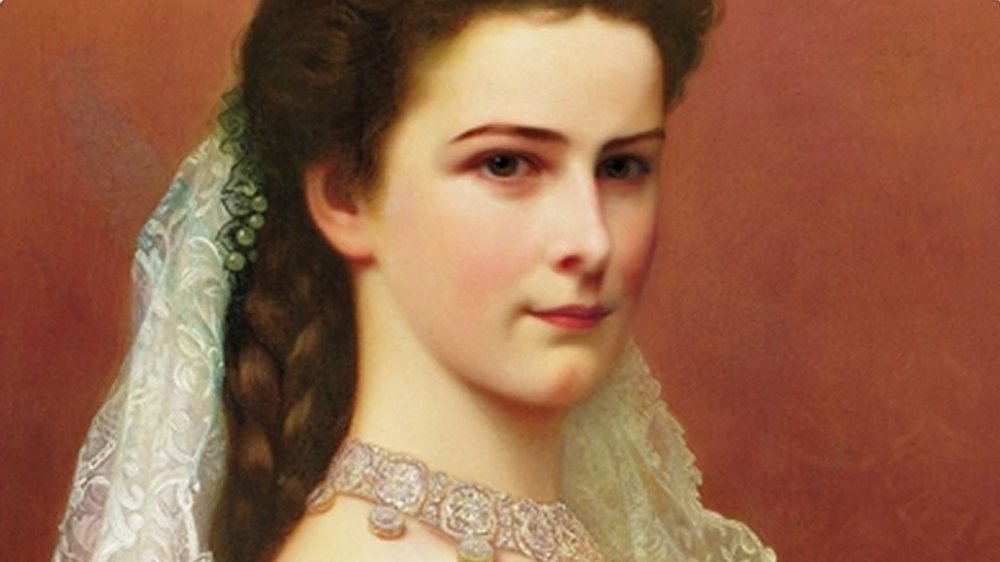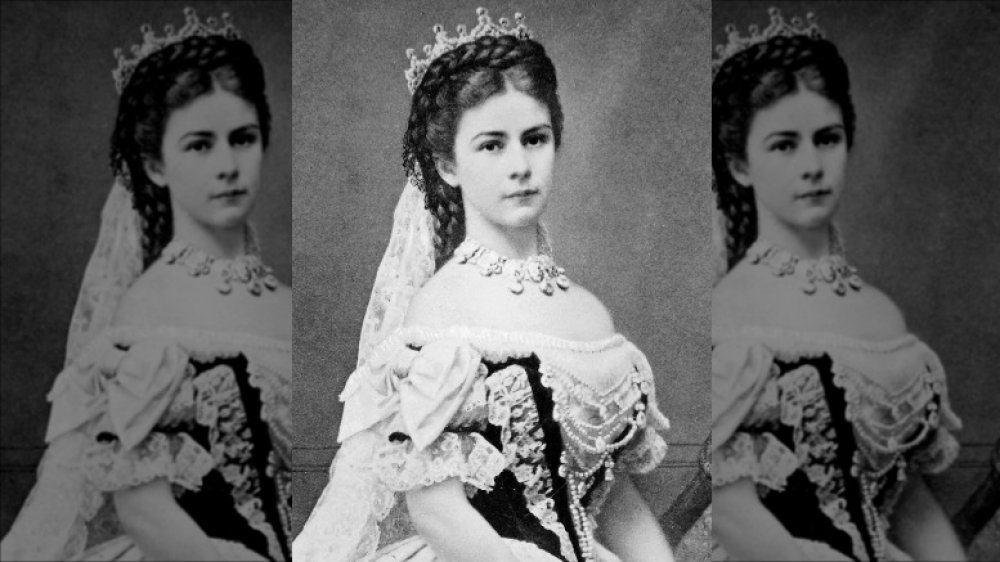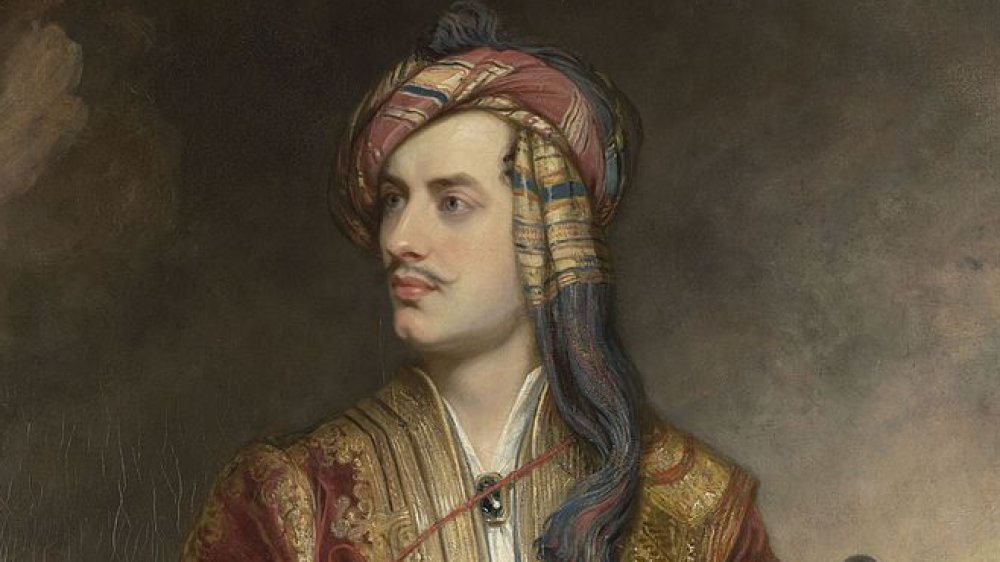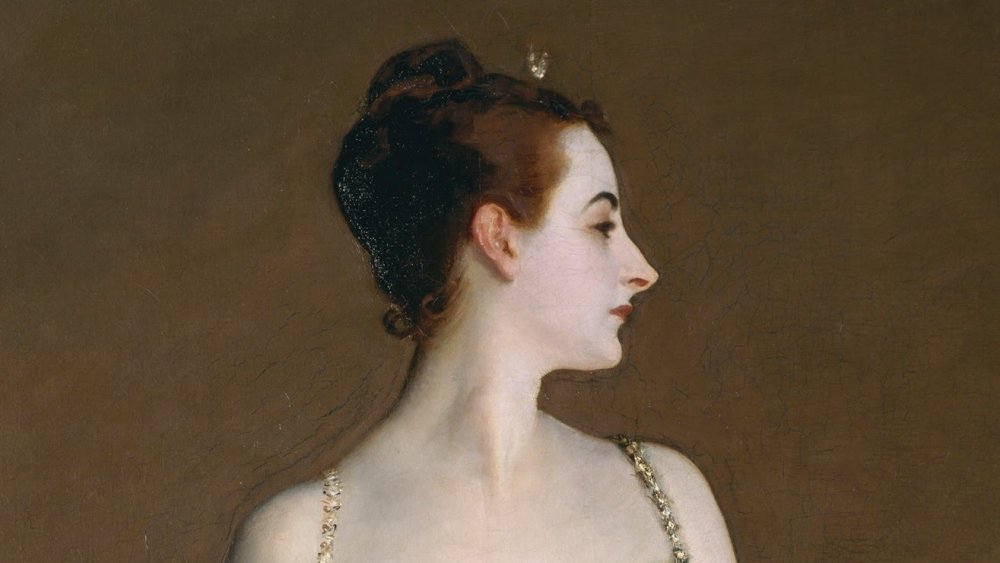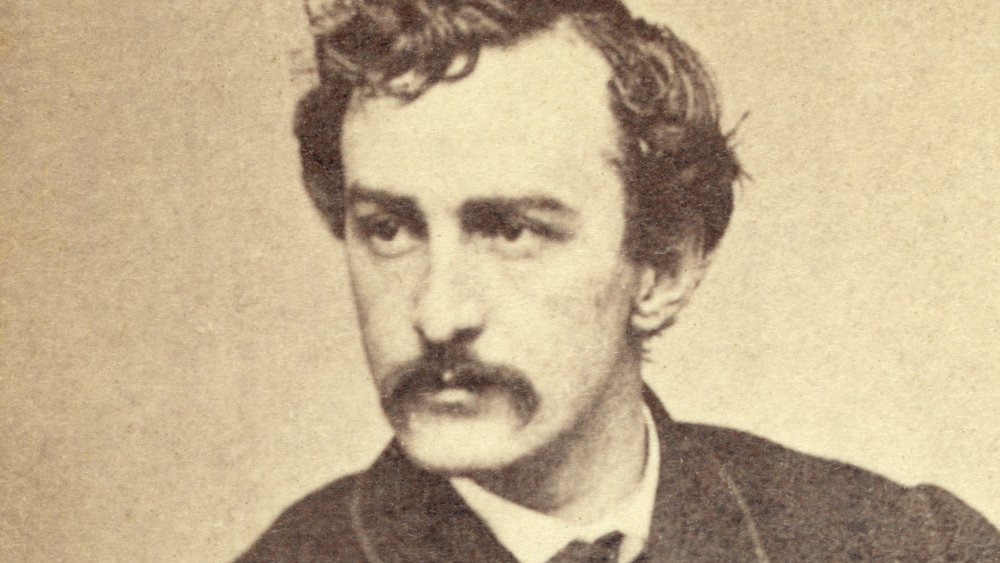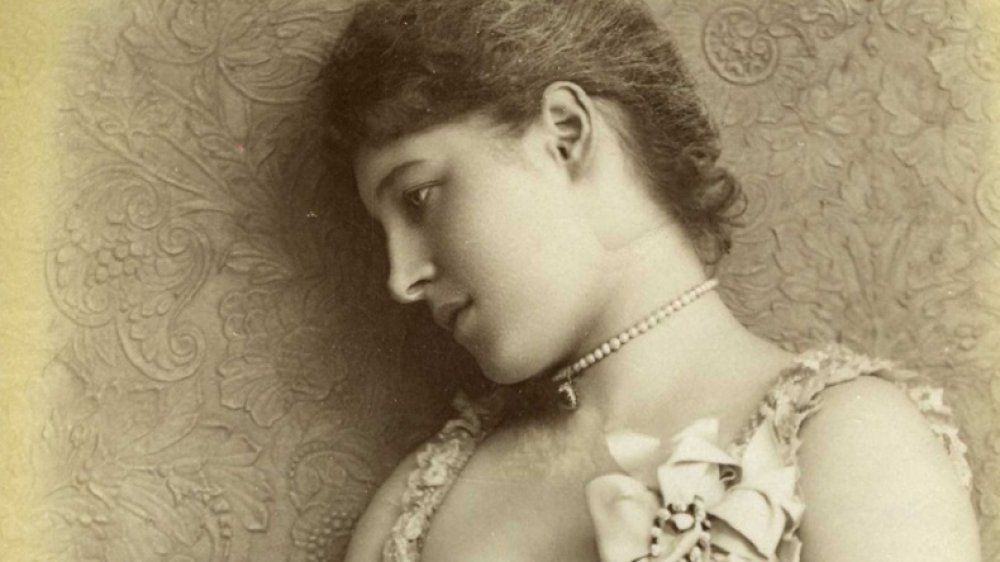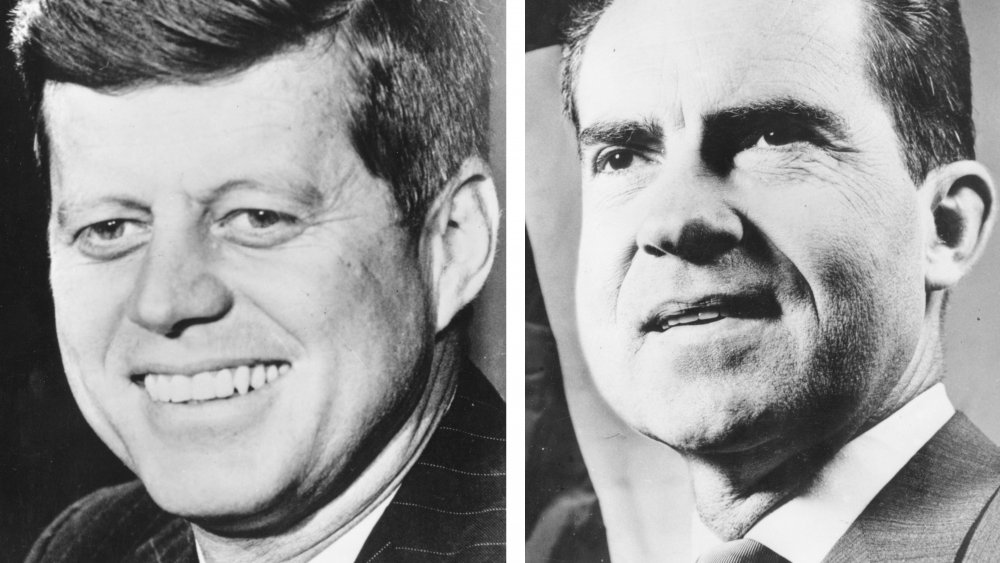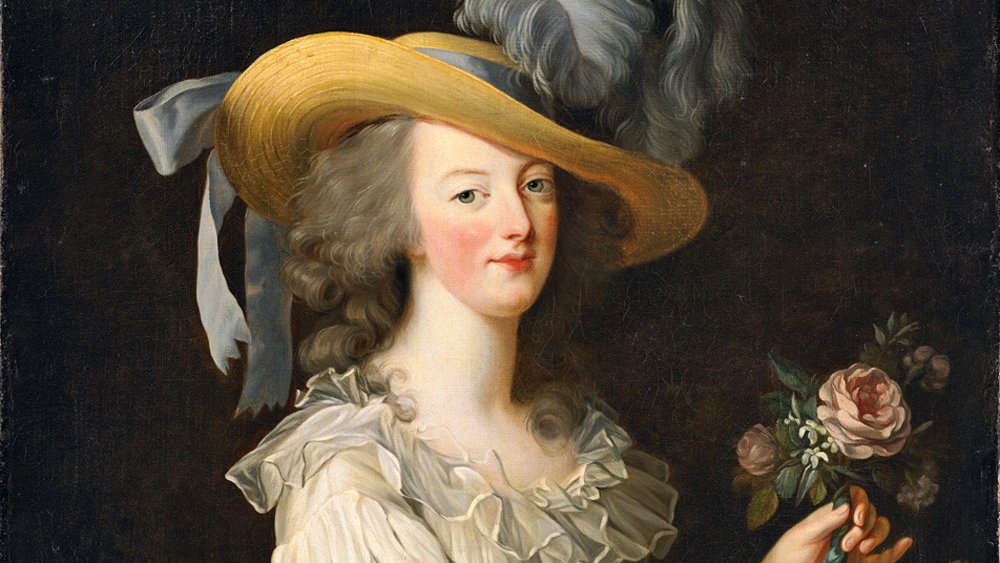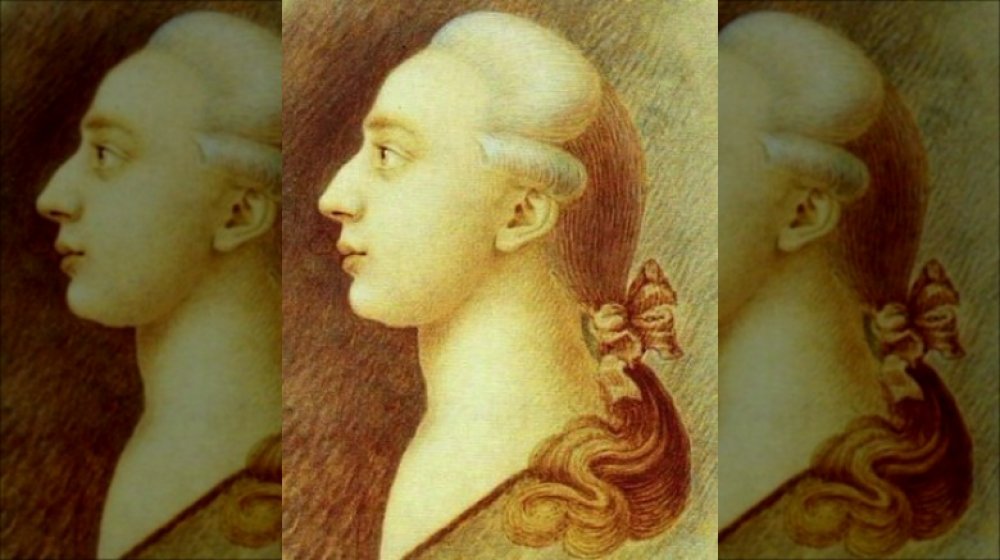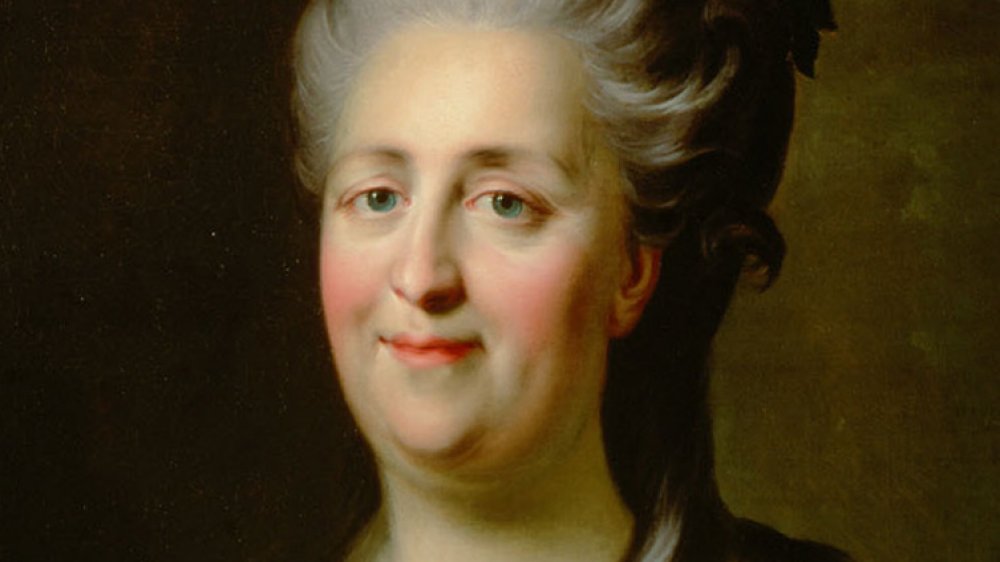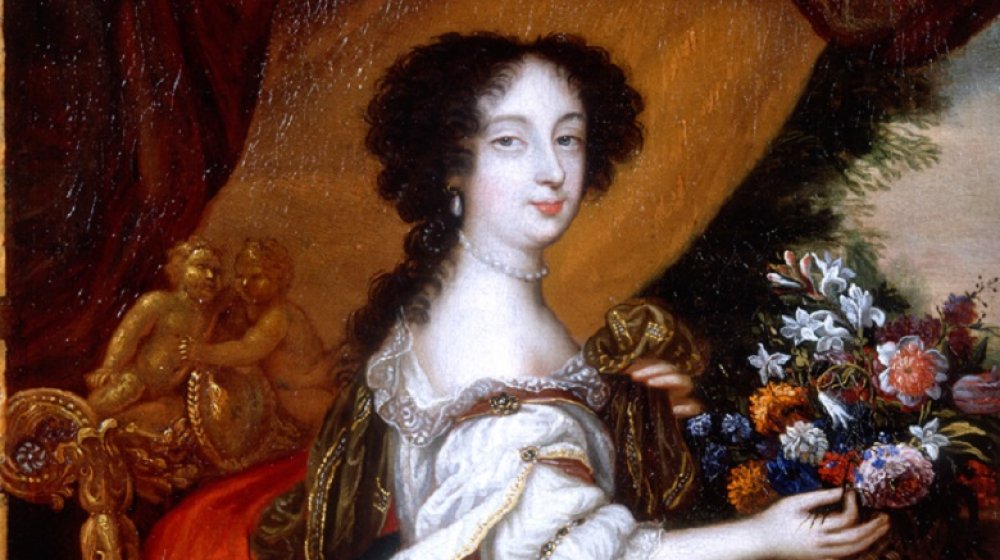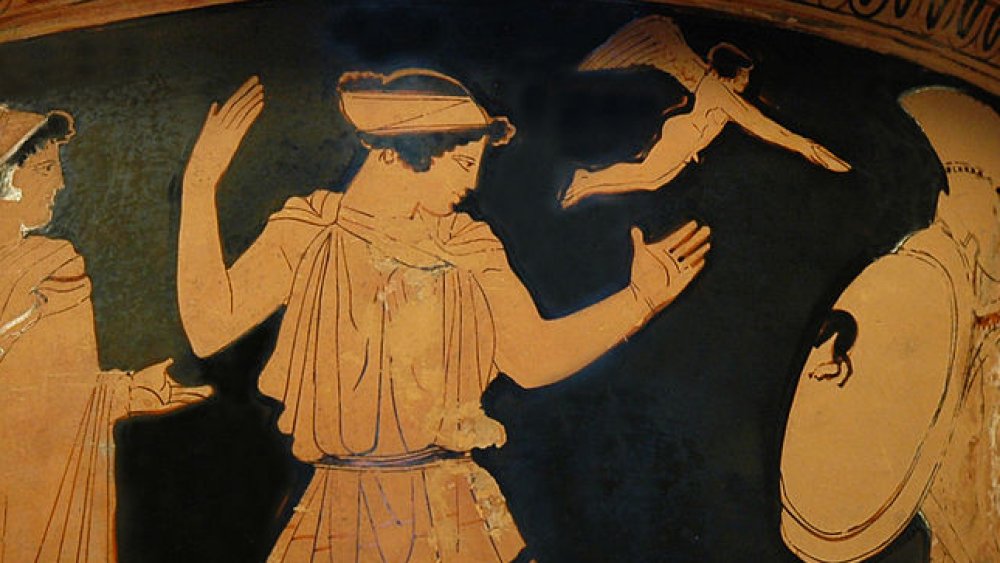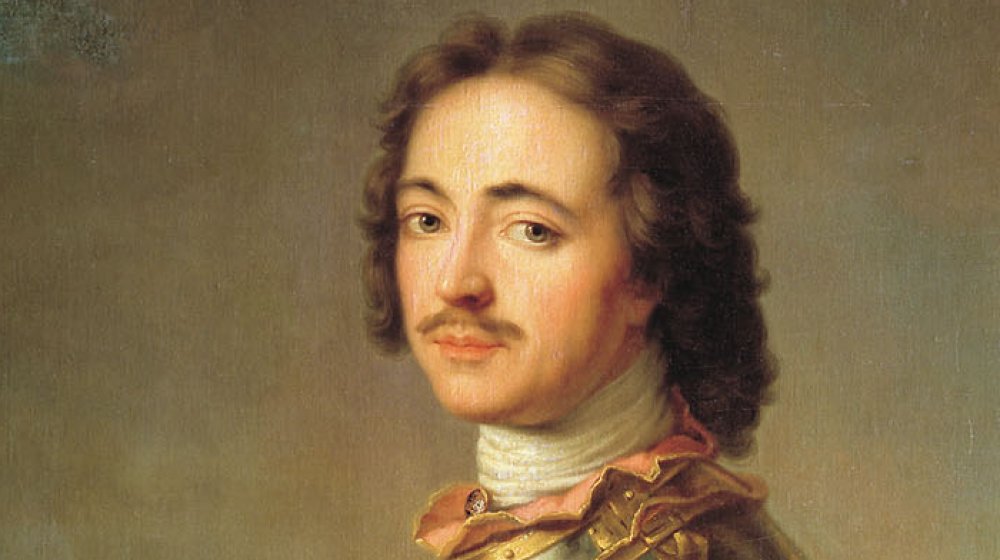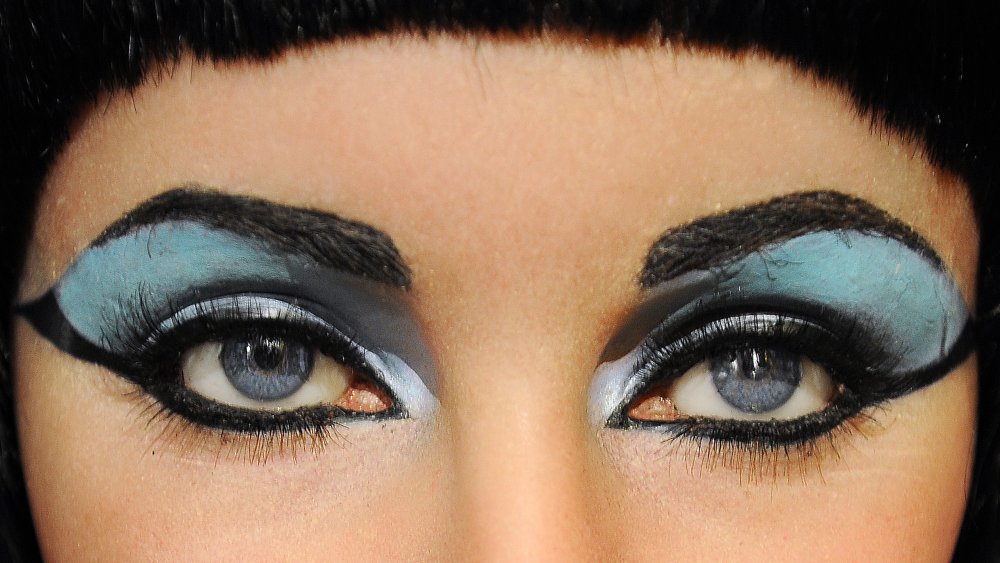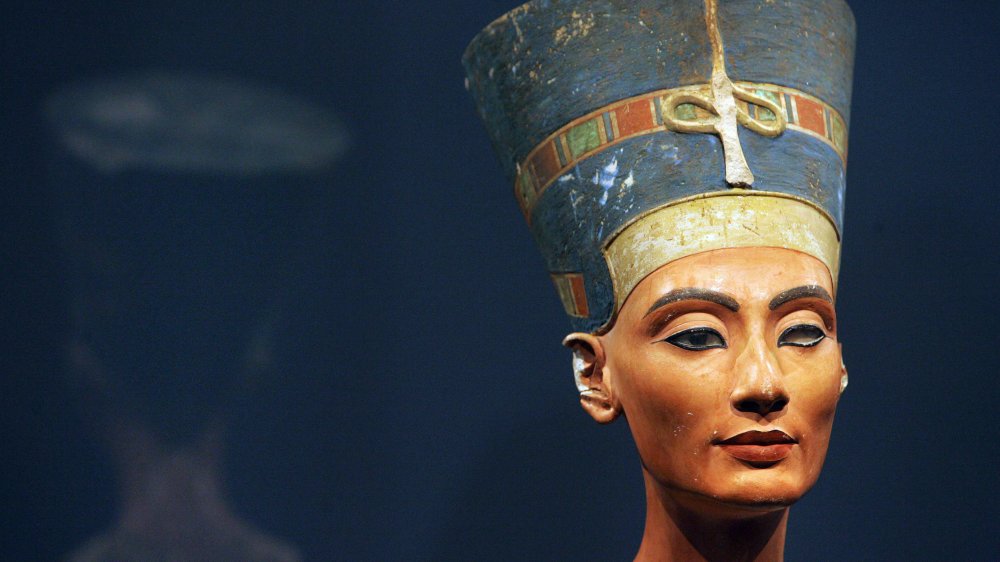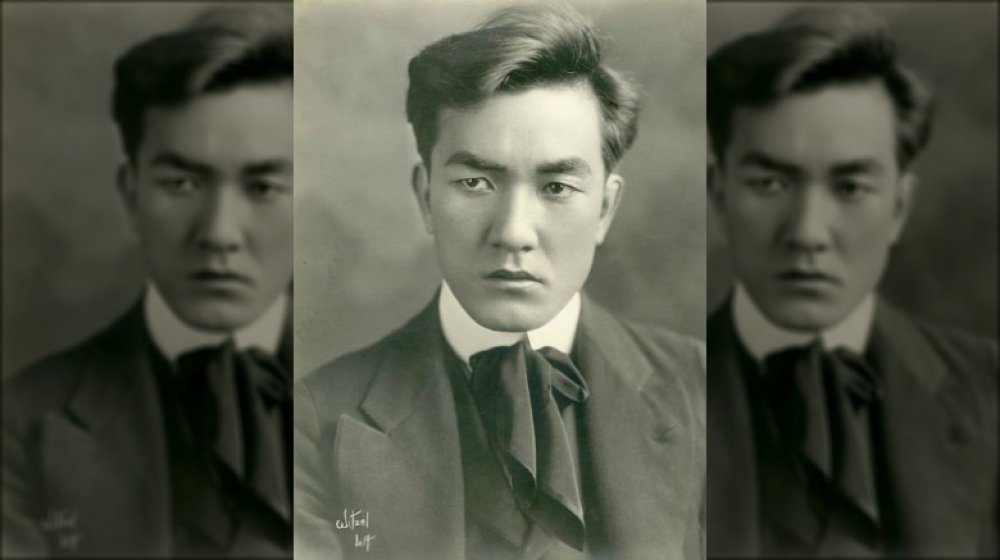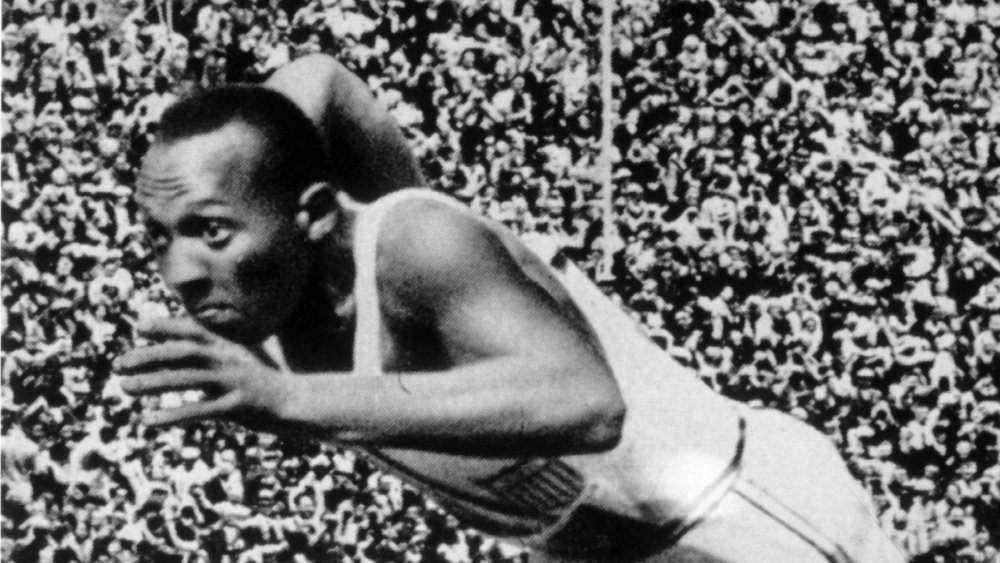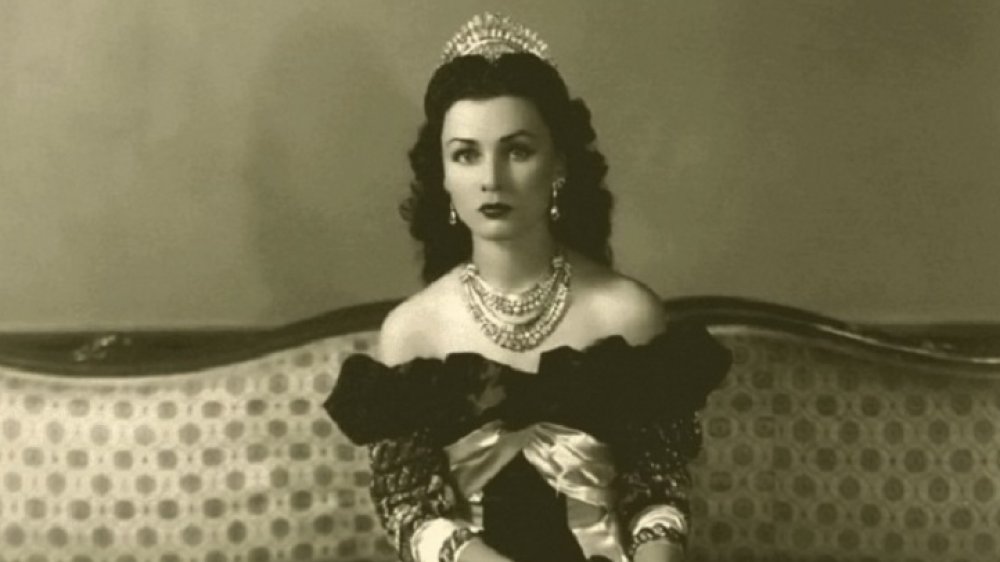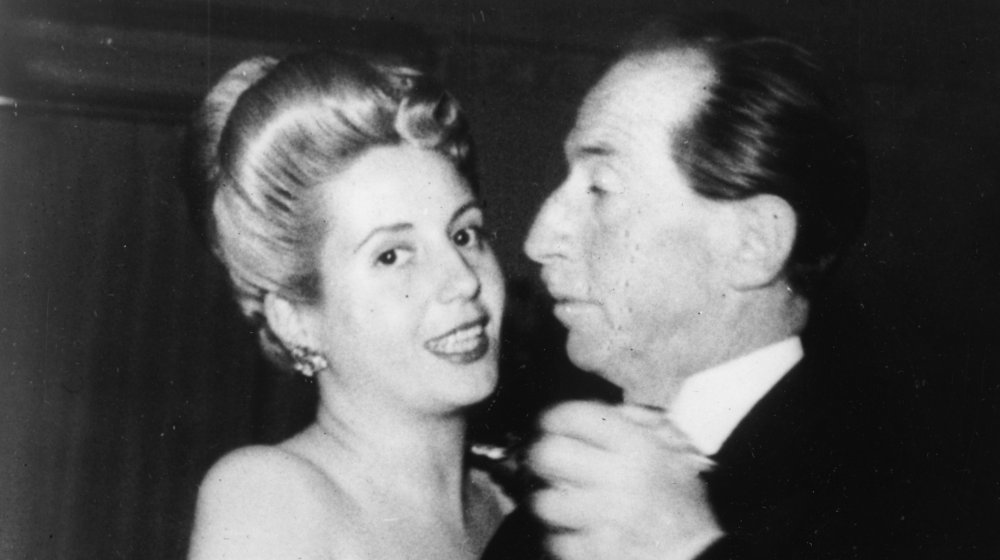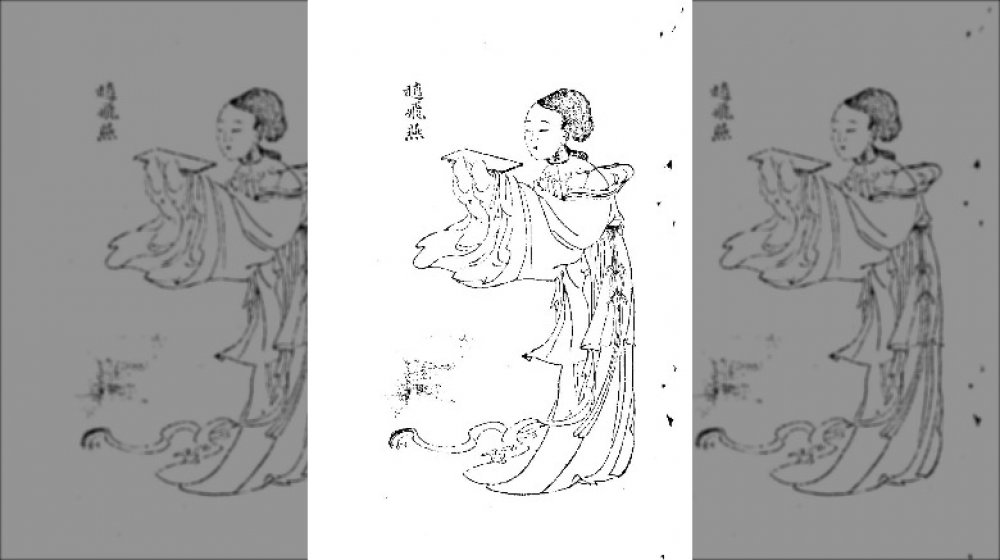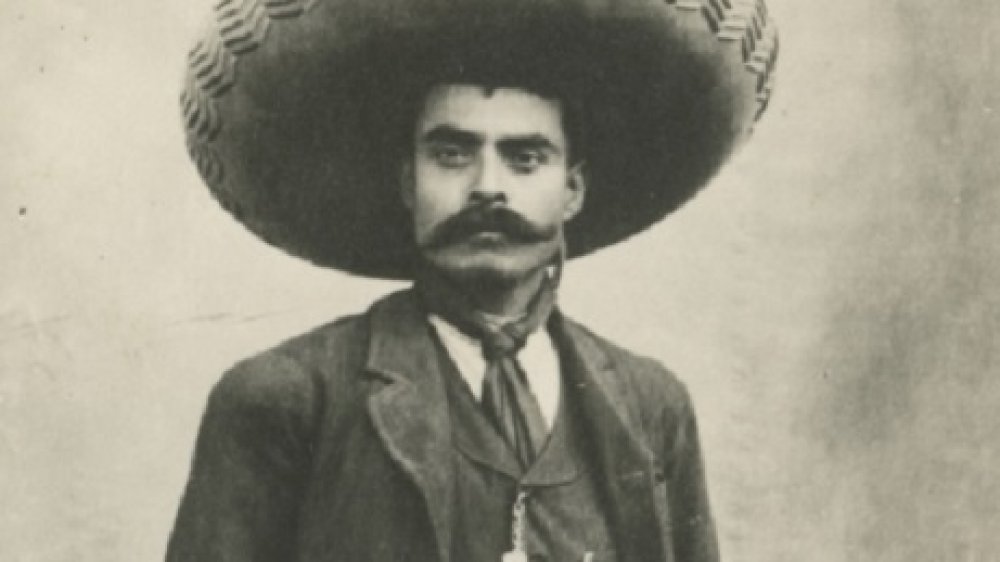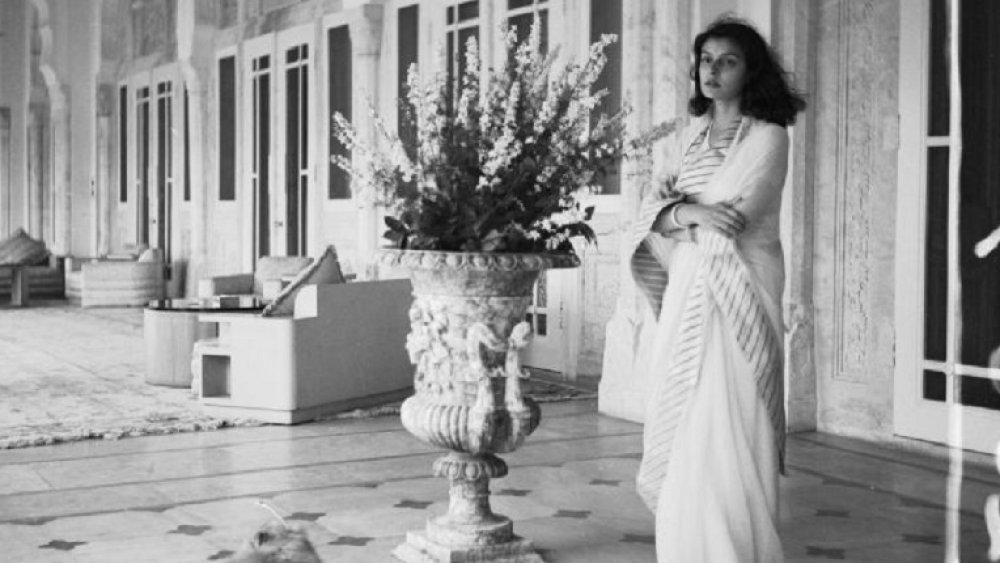The Hottest Famous People From History
If history has taught us anything, it's that there are more ways to get famous than there are grains of sand on a beach. There's the standard "being great" route, taken by people like Napoleon and George Washington. There's the route of "being in the right place at the right time," like Ulysses S. Grant, who was destined to be an obscure drunk until everyone realized he was also capable of winning battles. And then there's the road less traveled. The much-maligned, yet seriously envied road marked "being so freakin' hot no-one can forget you." Guess which one we're talking about today.
Of course, beauty isn't consistent across cultures (via BBC), so one person's historical hottie might be another person's olde timey troll. But go searching across history, and there are names that crop up, time and time again. These are the people whose looks, personality, or style were so magnetic to their contemporaries, that the entire world basically spent decades trying to get in their pants.
Empress Sisi was super beautiful and super troubled
In 1853, Austrian Emperor Franz Josef traveled to Bad Ischl to meet Duchess Helene. The emperor's mother had picked Helene out to be his future wife, and the meeting was just meant to be a formal acknowledgement. But that's not what happened. Rather, Franz Josef took one look at Helene's younger sister Elisabeth (known as Sisi), and immediately proposed to her instead. That right there? That's how beautiful Sisi was.
As Empress of Austria, Sisi's swoon-inducing looks were famous. She had wavy brown hair down to her ankles, a face that could launch more ships than a full-blown navy, and an athletic frame that was rare for women of her era. She owned one of history's earliest examples of a recreational gym, and spent hours each day working out and building her muscle tone. Her waist was a jaw-dropping 19.5 inches, equivalent to "holy crap, that's nothing" in centimeters (via National Geographic). Perhaps it's no wonder Franz Josef fell for her.
But while Sisi's life may sound like a fairy tale, it was anything but. Know what a 19.5 inch waist signifies? Anorexia. Although the diagnosis didn't exist in the mid-19th Century, Sisi's punishing diet, and documented battles with deep depression have led many to believe she suffered from the illness. So, yeah, it's not just our age that forces unrealistic ideas of beauty onto women.
Lord Byron was overweight and irresistable
Samuel Coleridge once wrote that Lord Byron had a face "so beautiful, a countenance I scarcely ever saw" (via the British Library). Lady Caroline Lamb called him "mad, bad, and dangerous to know." Portraits of the poet looking early-19th Century sexy still carry a frisson, like just looking at them is enough to conjure images of the original heartthrob sweeping you off your feet.
But while Byron's name may still be shorthand for "hottie," the real Lord Byron may have been less conventionally attractive than you'd think. According to a BBC documentary (quoted here via the Guardian), Byron had a terrible weight problem, clocking in at 194 lbs. while standing only 5'8". As the program makers so kindly put it, that would have made him "borderline obese."
He also had a club foot, walked with a limp, and had some seriously icky appetites, including probably seducing his half-sister, and lusting after 15-year-old Greek boys. So why do we remember Byron the hottie, and not Byron the flabby horndog? According to the BBC, it's because Byron was a master at PR. Any image of himself that he didn't like, he had destroyed. The paintings we have of Byron are basically the historical equivalent of a carefully curated Instagram page.
Virginie Amélie Gautreau: gorgeous and anonymous
If you know Virginie Amélie Gautreau, you likely know her as Madame X. That's the title John Singer Sargent gave to his portrait of her, a painting still famous today for its ghostly beauty, and raw, female sexuality. But rather than represent the zenith of Gautreau's career as a socialite and sitter, Portrait of Madame X actually captures her lowest moment. It was this image, more than anything, that led the 19th Century beauty to ruin.
The BBC has the story. Gautreau was a white Creole expat living in Paris in La Belle Époque when she met John Singer Sargent. Although she hadn't yet conquered the society pages, she was already noted for her looks. Her skin was so pale as to be almost colorless. She was said to put people in mind of a deer; striking yet delicate. Sargent's portrait was supposed to take all that to the next level, to make Gautreau the great beauty of the age. Instead, it destroyed her.
When Sargent unveiled his portrait, it caused a scandal. Gautreau's sexuality was just too open, too acknowledged for 19th Century audiences to be comfortable with. Both Sargent and Gautreau became targets for public mockery. While Sargent escaped to London, it was the start of Gautreau's decline. After the portrait was revealed, her fortunes sank. She died in anonymity in 1915. When Sargent put her painting back on display, he renamed her Madame X.
John Wilkes Booth was called the most handsome man in America
To say John Wilkes Booth was famous for his looks is like saying Stalin was famous for his poetry. Both certainly were noted in that area, but it kinda misses the point. But before Booth decided to go down in history as America's second most infamous assassin, he was known as an actor who exuded sex appeal. He had dark hair, piercing eyes, and an agile frame. As the Sydney Morning Herald notes, "he was said at one time to be the most handsome man in America." He had so many female fans you say Boothmania was the original Beatlemania.
What's rarely noted about Booth is that his adult life revolved around an intense rivalry with his brother. As Boston Globe explains, Edwin Booth was the best actor of his day, a guy who took Shakespeare from "boring play you gotta read for class" and turned it into something electrifying. Edwin was classically handsome, in opposition to Booth's wild charms, and also a staunch supporter of the Union. In a textbook bit of sibling rivalry, Booth supported the South.
Although there's zero evidence for it, it's fun to speculate sibling rivalry may have even factored into Booth's assassination of Abraham Lincoln. Lincoln was killed just as Edwin was in the middle of a hyper-successful run as Hamlet. It's probably fair to stay that John Wilkes Booth's showstopper upstaged his brother's performance.
Lillie Langtry turned the king of England's head
Do you want to know how good looking Lillie Langtry was? She was so good looking that even the dourly serious Encyclopedia Britannica makes space to tell its readers just how hot she was. A British society woman, Langtry initially made waves by appearing on the London stage in 1881, kind of a major deal at a time when acting was a job far beneath a well-bred woman. But while Langtry's acting may have ensured she got into the headlines, it wasn't what kept her there. Nah, that'd be her looks, and what her looks led to. Langtry was considered so desirable that the future King Edward VII put all his effort into seducing her (via the National Portrait Gallery).
But, hey, looks fade, kings have to settle down, and even the most attractive people wind up invisible to anyone below the age of 40. Luckily, Langtry future proofed herself against this when she was still in her twenties. In 1901, she opened her own theatre, allowing her to stay in the world she loved even once she stopped acting herself. She also set up her own stable for racing horses, thereby simultaneously conquering the two worlds posh Londoners cared most about.
JFK was so handsome everyone thought his looks won the presidency
In a presidential game of screw, marry, kill, there are only three acceptable answers to "screw": Obama (tall and good looking), Lincoln (tall, plus bragging rights), and JFK. John Kennedy was likely the hottest man to occupy the Oval Office. Even now, we all know the story of how Kennedy won his 1960 TV debates with Nixon because he was so smokin'. At least, we think we do.
Slate explains. You've probably heard how Kennedy and Nixon went face to face, and that radio listeners thought Nixon won, while TV viewers — enthralled by JFK's appearance — plumped for Kennedy. It's certainly true JFK rocked a dapper look, while Nixon did his best impression of a reanimated corpse that'd been dug up, hosed down, and shoved out onstage. But the idea it was JFK's looks that carried the debate doesn't hold up. There's almost no data to back up the myth that radio listeners thought Nixon won.
So if JFK's killer looks didn't win him the presidency, why is that anecdote featuring in an article about historical hotties? Because it's a great example of a self-fulfilling interpretation. We believe JFK's appearance won him the debate, because he really was that good looking. Even in a world where Nixon went on to be president in 1961, no-one would be saying "Nixon won because HOT."
Marie Antoinette: stunning and doomed
By age thirteen, Marie Antoinette was already regarded as a great beauty. Smithsonian Magazine describes her as "blessed with thick, ash-blond hair, large, grayish blue eyes and a radiant complexion." When she was married off to Louis XVI of France just one year later, she was so charming, so attractive, so extroverted, that she immediately won a kiss from her fiancee's father, Louis XV. In another age, Marie Antoinette's beauty might have seen her become like Sisi: a queen beloved by her nation.
Sadly, she didn't live in another time. She lived in France in the late 18th Century. And late 18th Century France was a place on the verge of detonating like a gigantic, angry bomb. The masses were stifled by the insanely unfair laws of the Ancien Regime, beset by famine, crippled by unfair taxes, and trapped in a shattered economy. Into this came a beautiful, vivacious girl who thought nothing of spending the equivalent of over $6 million in today's money on a pretend peasant village to play in in her palace gardens. There was really only one way this could end.
On October 16, 1793, Marie Antoinette was guillotined in front of a Parisian mob, baying for her blood. She was only 37.
Casanova would hate being remembered as a playboy
Take a look at that picture of Casanova above. Like, really look at it. Everyone can probably agree that that is not the face of a man you'd call hot. Or even "lukewarm."
Yet Giacomo Casanova is known today primarily for being eye candy so exquisite that women were powerless before him. When he crops up in pop culture, he's played by guys like Heath Ledger and David Tennant, exactly the sort of men you want to imagine swinging in your bedroom window, sweeping you off your feet, and seducing you with style. Yet, according to Smithsonian Magazine, Casanova would've hated this reputation. He saw his life's work not as seduction, but as literature and the arts.
While what we remember of Casanova's life tends to be his affairs with over 120 women (which is a lot, but still on the low side given he's literally Casanova), about two-thirds of his famous autobiography has nothing to do with sex. Elsewhere, Casanova wrote mathematical treatises, a proto-science fiction novel, a translation of the Iliad, and even a pamphlet that could be considered feminist. Ending his life working as a librarian, he likely hoped to be remembered, if he was remembered for anything at all, as an intellectual. Now here he is, slumming it on a list of hotties. History ain't fair.
Catherine the Great was so charming everyone fell for her
By the standards of her day, Catherine the Great was pretty average looking. Not unattractive, but not the sort of person you'd drool over like Homer Simpson staring at a donut. But that's the funny thing about attraction, there are no hard and fast rules. While Catherine wasn't considered a looker either then or now, she did have one quality that made everyone she met go loopy for her: she was one of the most charming women to have ever lived.
The History Chicks podcast details just how far Catherine's charms got her. By all accounts, she was witty, erudite, knowledgeable, and had a fantastic knack for actually listening to what other people were saying, rather than simply waiting for a gap in the conversation. Even as a child, she had these qualities. When she met fellow holder of the title "The Great," Frederick of Prussia, aged just four, she made such an impression that the German remembered her for the rest of his life.
The upshot of this is that Catherine was never short of lovers. Britannica notes at least three major men she took to her bedroom while her husband was still alive, and that's not including the procession of boytoys she indulged in toward the end of her life. And while you're asking, yes: that story about the horse is as fake as it sounds (via History).
Barbara Villiers' beauty supposedly made her the ruin of England
In the wake of the Interregnum, which saw puritanical Oliver Cromwell running England and all fun things banned, Britain went through a backlash of parties, hedonism, and oodles of lovemaking. It was during this era that the notorious poet John Wilmot chronicled the libertine ways of Restoration England, in poems that are still scandalous. It was also during this era that Barbara Villiers rose higher than she would've ever dreamed possible.
A "woman of great beauty," according to the Bishop of Salisbury, Villiers was hot, horny, and hedonistic. The mistress of Charles II, she knew she was attractive, and dressed in a way that flaunted her beauty. Her affairs were legendary, including with John Churchill, the Duke of Marlborough and ancestor of Winston Churchill. According to Historic UK, Villiers sat for so many portraits that she became one of the most recognizable women in Britain. It's probably fair to say that her face was that of the entire Restoration era.
Unfortunately, this made her a major target for public abuse. She was called "the curse of the nation," and the king's devotion to her helped make the crown extremely unpopular for a time. But although Villiers ended her life in poverty, she managed to outlive nearly all her critics, dying in 1709 aged 68. In this case, beauty had the last laugh.
Helen of Troy's looks earned her history's undying resentment
In 2018, History Today made a list of all the things Helen of Troy had been called over the millennia. It ranged from Shakespeare calling her a "strumpet," to Chaucer indirectly labeling her a "harlot," to others calling her a "tart," a "flurt," and, of course, a "whore" (plus other, NSFW stuff). The woman whose face launched a thousand ships, Helen has often been held up as the Western ideal of beauty. But she's also a good poster child for how societies have often reacted to beautiful, sexually active women. Spoiler alert: they've not been super keen on them.
Of course, it's debatable if Helen should count as a historic figure. She's mostly known from Homer's Iliad and Greek myth. But while this is true, it kinda brushes aside the little historical knowledge we have of ancient Troy and it's fall. According to the BBC, we've uncovered historical evidence of ancient noble women sparking wars with their affairs, not to mention women with styles and habits often attributed to Helen. So, yeah, Helen as a person might be myth, but it's also likely she's a blend of many real ancient women.
That's somewhat sucky from a historical perspective, because it demonstrates just how judgmental societies can often be of attractive women, with Helen being slandered for millennia. Damn, humanity, you're a class act.
Willem Mons turned the Queen and lost his head
One of the "best-made and most handsome men I have ever seen." That's how Willem (sometimes rendered as William) Mons was described by an observer during the early 18th Century. A German nobody, Willem managed to worm his way into the Russian court of Peter the Great (pictured above) after the tsar fell for his sister, Anna (via Russia Beyond). Once there, he used his easy looks to net himself patrons and make his mark on Russian society. It's likely that he could've gone all the way to the top, had he not made the fatal mistake of taking the empress as his lover (via Atlas Obscura).
At least, that's the story. In reality, it's not quite clear whether Mons actually smarmed his way into Catherine's corset or if that was just a rumor. But in this case, it doesn't matter. What does matter is that Peter the Great thought it was real. And if there was one guy in 1720s Russia you didn't want to cuckold, it was the tsar himself.
On a chilly November evening in 1724, guards abruptly arrested Mons in his apartment. He was dragged off and, barely a week later, decapitated in a city square. But this was only the beginning. Peter had Mons' head pickled and placed in jar, which legend says he then gave to Catherine to keep by her bedside.
Cleopatra caught the eye of Rome's most powerful man
If flaunting it had been an ancient sport, Cleopatra would've carried home the gold for Egypt every time. One of the most beautiful women in history, Cleopatra VII Philopator was a master at the arts of seduction, romance, and just being a total hottie. When she first met Mark Antony as an adult, she arrived on a boat with silver oars dressed as Aphrodite while costumed sea nymphs attended her every whim and servants wafted perfume across the crowds (according to National Geographic). And she did it all because she'd heard Antony was a lover of Hellenistic culture. There's regular seduction, and then there's really doing your homework.
It's clear Cleo was ancient eye candy. Cassius Dio even called her "a woman of surpassing beauty." Yet what's interesting is that archaeological evidence suggests this fabled looker wouldn't go winning any beauty pageants today.
Heritage Daily has the details. The only contemporary images we have of Ancient Egypt's last queen come from coins, and coin Cleopatra is, how to put this, pumping more testosterone than Tom Hardy. However, even these unflattering images may not be true to life but an attempt to give the queen an air of masculine authority. So how would Cleo really have looked? Given that ancient depictions of female beauty tend to emphasize full figures and prominent noses, the answer is probably best expressed as: "Not how you'd imagine her." It's always nice to be reminded that beauty isn't standard across cultures.
Queen Nefertiti's name literally invokes beauty
With a name like that, how could Nefertiti not be stunning? The wife of Pharaoh Amenhotep IV in the 14th Century BCE, Nefertiti's Egyptian name literally translates as "a beautiful woman has come," and this wasn't just propaganda. Although much of Nefertiti's life is a mystery, a bust of her (pictured above) survived all the way into the modern era and currently resides in Europe. Depicting a slender, serene woman, it looks no less attractive today than it did in Ancient Egypt. It probably helps that the image exudes power — power Nefertiti really had. As History explains, the queen is depicted in murals not just as a bystander to her husband but as someone as capable of driving a chariot as she is of smiting her enemies.
But while it's clear that historical Nefertiti was both scary-beautiful and scary-powerful, her actual influence on Ancient Egypt may have gone way further than just, "Dude, that queen is HOT." After 12 years, all depictions of Nefertiti vanish from the historical record. One theory is that she was raised to the position of co-regent alongside her husband, a role that required her to start dressing as a man. Another, even more tantalizing theory suggests she may have taken over after Amenhotep IV's death, taking on the persona of the Pharaoh Smenkhkare (via Biography). Hey, she wouldn't have been the first female pharaoh, right Hatshepsut?
Sessue Hayakawa was Hollywood's first heartthrob
If you were a young woman in 1915, it's likely that your first sexual awakening would've come not via an accidentally exposed table leg or anything delightfully old-fashioned like that but from one specific film. Directed by Cecil B. DeMille, silent flick The Cheat told the story of a woman offered $10,000 for a night of passion. It was meant to be a cautionary tale, with an Asian villain who both offers the heroine the money and then brands her with a red-hot iron when she tries to refuse. The problem? DeMille cast the absurdly handsome Sessue Hayakawa as his villain, and in doing so accidentally turned a supposed morality tale into the first Fifty Shades of Grey.
Dazed explains. Sessue Hayakawa was masculine, brooding, and so handsome he could make celluloid swoon. Combined with his dangerous, violent character in The Cheat, these traits turned him into sensual catnip. Hayakawa was possibly the first breakout movie star among women, and certainly the first nonwhite star to take America's white, female audiences by storm. Scenes of him playing villains who hurt or ravished women made movie theaters of the time fill with screams of delight — sort of like if Beatlemania had involved John and Paul seductively menacing Ringo.
Unfortunately, it couldn't last. While Hayakawa would have a long career, the 1930 production code banned all depictions of interracial desire onscreen. The Asian heartthrob was replaced by moustachioed pretenders like Clark Gable.
Jesse Owens: the fast and the hot
Stood still, Jesse Owens was a good-looking man — muscular, maybe a tiny bit dorky, like your friend's dad you had a weird crush on. In motion, though ... in motion, Jesse Owens was something else. You know how they said Muhammad Ali would "float like a butterfly"? Owens on the track was like the Platonic ideal of a butterfly, something so weightless, so graceful it seemed to transcend nature. In 1936, The Guardian named Owens the greatest sprinter of all time and noted that he was "not merely the fastest but incomparably the most beautiful." If Usain Bolt was the early 21st-century male who looked most perfect while in motion (and Justin Gatlin the 21st-century male who looked most perfect after swallowing a metric ton of performance-enhancing drugs), then Owens was the all-time greatest.
Although the Jesse Owens story today is about a talented black American who showed up Hitler's dreams of racial superiority at the 1936 Olympics, at that time, a whole slew of the US still thought the words "black" and "American" were incompatible. As Voice of America notes, "Owens returned to a segregated America not as an Olympic hero, but as just another black man." The Dictionary of World Biography explains that this unbelievably talented sprinter's post-1936 life amounted to being ignored by white America for decades, until his life story was reassessed in the Cold War era and he finally got the credit he was due.
Princess Fawzia looked like Hollywood royalty
Every now and then, a royal comes along who commands just as much attention as any Hollywood celebrity. Princess Diana fit this category, as did Princess of Monaco Grace Kelly. But rarely do you get a born royal who doesn't just live a life of stardom but resolutely looks the part. Princess Fawzia Fuad of Egypt was the major exception. Born into Egypt's royal house in 1921, she looked every inch like someone who belonged on the silver screen. The National calls her "strikingly pretty" and describes how many contemporary magazines named her the most beautiful woman in the world. Early images of her still make her look like a starlet who could hold her own onscreen with Katharine Hepburn.
Still, just looking like a silver screen goddess doesn't mean necessarily living like one. Fawzia's life wasn't exactly a fairy tale. In 1939, her brother, the king of Egypt, married her to the Shah of Iran. But while "Queen of Iran" sounds like the coolest title ever, the sad reality was that Fawzia was badly neglected in Tehran and half-starved to death (per The New York Times). Although she managed to secure a divorce, her daughter wound up staying in Iran while, back home in Egypt, a military coup overthrew her family. By the 1960s, she'd faded entirely from the public eye, living a modest life in a small villa in Alexandria — curiously enough, the exact sort of fate that befell many old Hollywood starlets.
Eva Peron was stylish and controversial
Long before she became globally famous as Evita, María Eva Duarte was famous in her native Argentina as an actress with some serious style. A snappy dresser, she charmed everyone who met her, not least Colonel Juan Domingo Perón. As CR Fashion explains, the two first came into contact in the aftermath of an earthquake. They were supposed to be discussing an "artistic festival" to raise funds for the victims. Instead, Duarte wowed the colonel, who proposed in no time flat. Barely a year after their first encounter, Colonel Peron was elected president, and, just like that, Maria Duarte become Evita, global style icon.
As First Lady of Argentina, Evita turned making an impression into an art form. Although she was more "good looking" than strictly beautiful, her bright blonde hair, elegant dresses, and buckets of charm meant she still knocked people right off their feet. The BBC notes how her sheer visual appeal combined with her outspoken personality made her both one of the most loved and loathed women in Latin America. Loved because she came from a hardscrabble background, and her glamour made her a great role model for the country's poorest. And loathed because ... well, let's just say Eva Peron was no shrinking violet.
In fact, Evita went so far as to announce she was running for the Vice Presidency in 1951. This was too much for Argentina's army, which forced her to withdraw. She died just a few months later.
Zhao Feiyan was China's gold standard for beauty
Not all historical hotties are created equal, and even within the confines of beautiful, there are different gradations of mind-blowing attractiveness. Zhao Feiyan sat at the very top of this pyramid, a historical looker so darn good-looking that the world just up and decided to make her empress. According to China's Women's Federation, Zhao had been abandoned at birth alongside her twin sister. Sent to work in the household of Princess Yang'a, she became such a master at dancing that she captivated the then-ruler, Emperor Cheng. Cheng took her back to his palace, gave her the highest rank of concubine, and proceeded to become utterly obsessed with her.
We're talking really obsessed, to the point of supposedly neglecting his empire. (This all happened way back in the first century BCE, so details are sketchy.) Given that Zhao depended on the emperor to survive, she desperately tried to get pregnant by him. When that failed, she and her twin sister took to killing the children of other concubines to maintain their high position (via China Knowledge).
Amazingly, all this scheming worked. Zhao was eventually promoted right the way up to empress — or "queen mother" to Cheng's son Ai in some tellings. Ai was likewise so thrilled by her beauty that he protected her throughout his reign. But by the time he died, in 1 BCE, the court was through with her. Zhao Feiyan was forced to commit suicide.
Emiliano Zapata was the best-dressed revolutionary in history
In a just world, Emiliano Zapata would be more famous than his revolutionary sometimes-brother, Pancho Villa. In the most just world of all, Zapata would also be famous not just for his uprising but also for being the most dapper man to have ever existed. Although he came from a dirt-poor background in the impoverished state of Morelos, Zapata was never pictured looking anything less than "so sharp he could be modeling Calvin Kline's Mexican Revolution collection." With a mustache that was waxed to perfection and a taste in suits that was both flamboyant and enviable, Zapata almost certainly qualifies as the best-dressed dude to ever help overthrow a government.
One of the key words in the preceding sentence is "flamboyant." Although Zapata's dress may look dapper today, it was dangerously dandyish for small-town Mexico circa 1910, when looking good usually played second fiddle to proving how manly you were. But, as the book Emiliano Zapata: A Biography notes, nobody ever seems to have mocked Zapata's dress sense. Maybe it was because his clothes signified his importance. Or maybe it's just because even guys wholeheartedly embracing the concept of toxic masculinity could see that Zapata was smoking hot.
Sadly, Zapata's dandy style and rugged credentials didn't help him survive the upheaval in Mexico. He was assassinated in April 1919, shortly before the revolution's endpoint. Although many have since embraced Zapata's revolutionary reforms, sadly, fewer have embraced his revolutionary sartorial choices.
Gayatri Devi was one of Vogue's most beautiful women
Born a princess, and later married to a Maharaja, Gayatri Devi was always destined for a life in the public eye, but she could never have anticipated just how far her fame would spread. As a young royal, she was glamorous, well-dressed, and looked like a movie star. Inevitably, this combination was enough to capture the planet's attention. Vogue once named Devi one of the most beautiful women in the world, which is pretty good going when your competition runs into a couple of billion. She was photographed by guys like Cecil Beaton and generally lived the sort of fairy-tale life most of us would quite happily trade our day jobs in for. Like, right now.
But Devi was more than just a pretty face. As Britannica details, she was also a pioneer for equal rights, opening up girls' schools across India and refusing to go into purdah, a traditional state of seclusion for female royalty, which sounds not unlike an entire life of self-isolation. Rather than hide away as she was expected to, Devi instead traveled the globe, met people like Jacqueline Kennedy, and even became an opposition politician. Sadly, this meant she was a prime target for imprisonment during the Emergency, when Prime Minister Indira Gandhi suspended all rights for 21 months and jailed everyone who disagreed with her. Still, Devi survived the ordeal, finally dying in 2009 at the age of 90 and still looking great with it.
